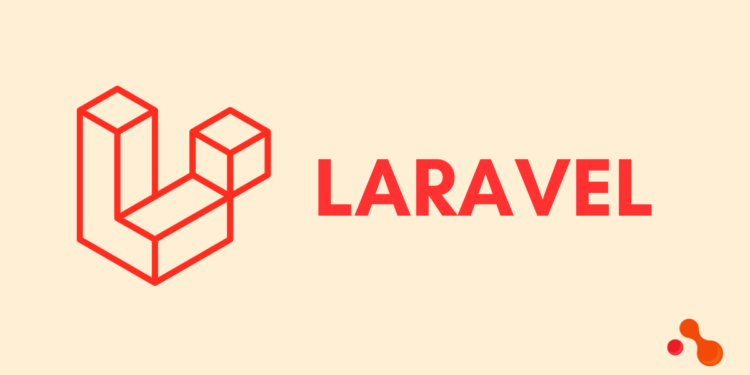Introduction
In Laravel applications, database query optimization plays a vital role in enhancing performance and speed. Imagine your application is a library, and the database is the librarian. The faster the librarian finds the books (data), the quicker you can enjoy reading (application usage). This blog aims to simplify the concept of database query optimization and provide practical tips for everyone, regardless of their technical background. We will explore how to make your Laravel application run smoother by optimizing queries, and cover topics like Eloquent usage, identifying bottlenecks, best practices, indexing, and debugging techniques. Let’s get started!
Understanding Database Query Optimization
Database query optimization is the process of improving the performance and efficiency of database queries in Laravel applications. It involves making changes to the way queries are written and executed to reduce response times, minimize resource usage, and enhance overall application performance.
A. What is database query optimization?
- Database query optimization aims to make queries run faster and use fewer resources.
- It involves analyzing and fine-tuning queries to ensure they retrieve data efficiently.
- Optimization helps in delivering a smoother user experience and better application responsiveness.
B. Why is it essential for Laravel applications?
- Laravel applications heavily rely on database queries to fetch and store data.
- Poorly optimized queries can lead to slow page loads and reduced scalability.
- Optimized queries ensure your application can handle more users and higher data volumes.
C. Common performance issues caused by inefficient database queries
- Slow page loads and response times due to time-consuming queries.
- Increased server load and resource consumption, leading to higher hosting costs.
- Application crashes or slowdowns during peak traffic periods.
- Reduced user satisfaction and engagement due to a sluggish user experience.
In conclusion, understanding database query optimization is crucial for every Laravel developer. By applying optimization techniques, you can enhance the performance of your application, reduce resource usage, and provide a better experience for your users.
Laravel Eloquent: An Overview
Laravel’s Eloquent ORM (Object-Relational Mapping) is a powerful feature that simplifies database interactions in Laravel development services. It offers several advantages and makes handling databases a breeze. Here’s a quick overview of what you need to know:
A. Introduce Laravel’s Eloquent ORM:
- Eloquent is Laravel’s built-in ORM, which helps developers work with databases using object-oriented syntax.
- It acts as a bridge between the application’s code and the database, allowing you to interact with the database using PHP classes and methods.
B. Advantages of using Eloquent:
- Eloquent provides a clean and expressive syntax, making it easy to read and write database queries.
- It supports relationships between database tables, enabling you to define associations like one-to-one, one-to-many, and many-to-many.
- Eloquent handles query optimization under the hood, improving the application’s performance without much effort from developers.
C. Basic usage examples of Eloquent queries:
- Fetching data from a table:
User::all()retrieves all users from the “users” table. - Filtering data:
User::where('status', 'active')->get()fetches active users. - Creating a new record:
User::create(['name' => 'John', 'email' => 'john@example.com'])adds a new user to the table.
By leveraging Eloquent, Laravel development companies and those hiring Laravel developers can streamline database operations and build efficient and robust applications.
Identifying Performance Bottlenecks
To ensure your Laravel application runs smoothly and efficiently, it’s crucial to identify and address performance bottlenecks. Here are some simple steps to do so:
A. Using Laravel Debugging and Profiling tools
- Laravel provides built-in tools like “debugbar” and “telescope” to help you monitor application performance.
- Debugbar displays useful information like query count, memory usage, and execution time right in your browser.
- Telescope offers advanced monitoring, allowing you to inspect database queries and performance metrics.
B. Analyzing query execution times and resource usage
- Use Laravel’s query logging feature to record and review the executed queries.
- Analyze the time taken by each query to identify slow-performing ones.
- Keep an eye on CPU and memory usage to detect resource-intensive operations.
C. Identifying frequently accessed or slow-performing queries
- Look for queries that are executed frequently, as they can impact overall performance.
- Optimize these queries by using eager loading, indexing, or caching techniques.
- Address slow-performing queries by optimizing database structure or rewriting the queries.
By following these steps and hiring Laravel developers from a reputable Laravel development company, you can pinpoint and resolve performance bottlenecks, ensuring a faster and more efficient application for your users.
Best Practices for Optimizing Database Queries in Laravel
When it comes to improving the performance of your Laravel application and making the most out of your Laravel development services, optimizing database queries is crucial. Here are some key best practices to achieve better performance:
A. Use Eager Loading: Reduce the number of queries and avoid the “N+1 query problem” by eager loading relationships. This means fetching related data in a single query, saving valuable time and resources.
B. Optimize Relationships and Joins: Carefully design your relationships and use joins effectively to retrieve data efficiently from multiple tables.
C. Avoid N+1 Query Problem: By using eager loading (point A), you can prevent the N+1 query problem, where additional queries are executed for each related record, causing performance issues.
D. Utilize the “Select” Method: Fetch only the necessary columns from the database using the “select” method. This reduces the data transfer and enhances query performance.
E. Implement Caching: Cache frequently accessed data to avoid repetitive queries, resulting in faster responses and reduced database load.
By following these best practices, your Laravel development company can ensure that your application runs smoothly and efficiently, providing a better experience for users. For even better results, consider hiring skilled Laravel developers who understand these optimization techniques.
Leveraging Indexing
Database indexes play a crucial role in optimizing the performance of Laravel applications. They are like a super-fast reference guide that helps the database find information quickly, making your app faster and more efficient. Here’s how you can make the most of indexing in your Laravel development:
A. Understanding database indexes:
- Indexes are data structures that organize the data in your database for quick retrieval.
- They act like the index of a book, allowing the database to locate specific information without scanning the entire dataset.
B. Choosing the right columns for indexing:
- Identify columns frequently used in search conditions, joins, or sorting.
- Avoid over-indexing, as it can lead to unnecessary overhead during data modifications.
C. How to add indexes in Laravel migrations:
- Create a new migration using the “php artisan make:migration” command.
- Use the “schema” builder to add indexes to your table in the “up” method.
- Specify the columns and the index type (e.g., primary, unique, or regular index).
- Run the migration with “php artisan migrate” to apply the changes.
By leveraging indexing in your Laravel development, you can significantly boost query performance and provide better user experiences. For expert assistance, consider hiring Laravel developers from a reputable Laravel development company offering top-notch Laravel development services.
Query Performance Tips
Optimizing database queries in Laravel is crucial for enhancing the performance of your web applications. Here are some easy-to-understand tips to boost query performance, ensuring a smooth experience for your users:
A. Limiting the result set with “take” and “skip” methods:
- Use “take” to fetch a specific number of records from the database.
- Utilize “skip” to skip a certain number of records and get the next ones.
- Reduces unnecessary data retrieval, improving response times.
B. Using “chunk” for processing large datasets efficiently:
- Instead of fetching the entire dataset at once, “chunk” breaks it into smaller pieces.
- Ideal for processing large datasets without consuming excessive memory.
- Great for Laravel development services dealing with substantial data.
C. Employing database-specific query optimizations:
- Leverage database-specific features like indexes to speed up queries.
- Optimize queries based on the database engine you’re using (e.g., MySQL, PostgreSQL).
- A must for hire Laravel developers to fine-tune performance.
By implementing these query performance tips, your Laravel development company can create applications with faster response times and reduced resource usage, ensuring a seamless user experience. Hire Laravel developers who understand these optimization techniques to build high-performing and efficient web applications.
Database Query Debugging Techniques
A. Enabling Query Logging for Debugging Purposes:
- Query logging allows you to see the actual SQL queries that your Laravel application executes on the database.
- To enable query logging, add the following line to your Laravel application’s configuration file:
DB::connection()->enableQueryLog(); - After executing queries, you can retrieve the logged queries using:
DB::getQueryLog(); - This helps identify which queries are running and potentially causing performance issues.
B. Interpreting and Analyzing Query Logs:
- Once you’ve enabled query logging, you’ll get an array of logged queries with detailed information.
- For each query, check the SQL statement, bindings, and execution time.
- Look for queries that run frequently or take longer to execute, as they might be candidates for optimization.
- Pay attention to any N+1 query issues where related data is fetched inefficiently.
C. Real-life Examples of Query Optimization and Debugging:
- Present some examples of common query performance problems and how they were resolved.
- Show how eager loading and reducing the number of queries helped improve application speed.
- Demonstrate how indexes were added to significantly speed up certain queries.
- Share any code snippets or before/after performance metrics to highlight the impact of optimization.
External Tools for Query Optimization
A. Introduction to Third-Party Tools for Database Performance Monitoring:
- Various third-party tools are available to help monitor and optimize database performance in Laravel applications.
- These tools provide valuable insights into query execution, response times, and resource usage.
- They can help you pinpoint bottlenecks and identify queries that need optimization.
B. Brief Overview and Pros/Cons of Popular Tools:
- Laravel Debugbar:
- Pros: Simple integration, shows query count, execution time, and provides a detailed timeline of application events.
- Cons: Limited to profiling the queries on the page being currently accessed.
- Clockwork:
- Pros: Provides detailed query information and additional features like timeline, request data, and logs.
- Cons: Requires a browser extension for full functionality.
- Laravel Telescope:
- Pros: Offers comprehensive insights into database queries, requests, and other application-related data.
- Cons: Can consume significant resources in production if not used carefully.
- Spatie Laravel Query Monitor:
- Pros: A dedicated package for monitoring queries, allowing you to log, analyze, and profile them.
- Cons: Requires manual configuration and setup.
Choose a tool that suits your development workflow and provides the level of query analysis you need. These tools will be valuable allies in optimizing your database queries and improving your Laravel application’s performance.
Conclusion
In this blog, we explored essential tips to optimize database queries in Laravel for improved performance. We learned that efficient database query optimization is crucial for enhancing application speed and resource utilization. By leveraging Laravel’s Eloquent ORM, identifying bottlenecks, and employing best practices like eager loading, indexing, and query performance tips, we can significantly boost our application’s performance. I encourage all readers to implement these strategies in their Laravel projects. Embracing these optimization techniques will lead to smoother, faster, and more responsive applications that delight users and ensure better overall performance.



















